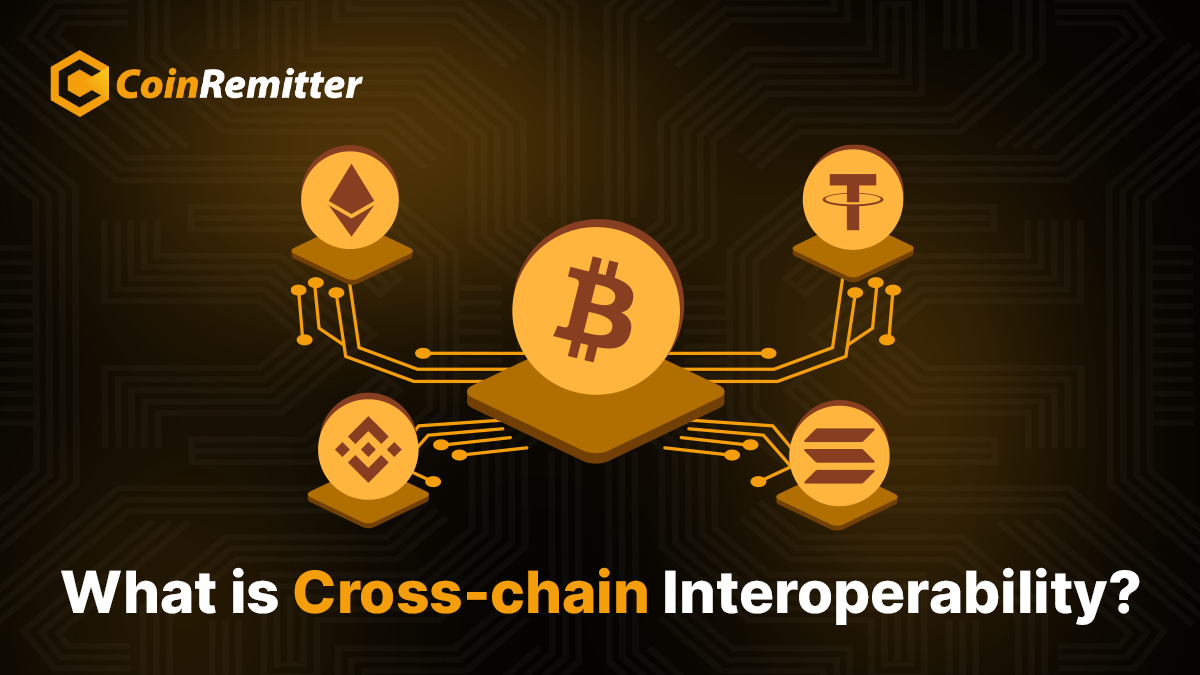One of the biggest issues in blockchain technology is that each blockchain operates independently, with its own rules, protocols, and governance models, making it difficult for different blockchains to interact. This affects the smooth exchange of information across various blockchain networks. To address this, cross-chain interoperability protocol acts as a blockchain bridge, allowing different networks to connect, share resources, and transfer value. This technical advancement overcomes the limitations of isolated blockchains and enhances the utility, efficiency, and scalability of blockchain applications. This blog will understand cross-chain interoperability in detail.
Cross-Chain Interoperability
Blockchain interoperability means that blockchains can freely share data. For example, everything owned and every transaction made on one blockchain can be seen on another blockchain with the right interoperability setup. This means the activity on one blockchain can also happen on another.
Cross-chain interoperability protocol lets different apps and platforms communicate and work on different blockchains, so users can use more assets and services. It acts as a bridge between them, cutting out the need for a third-party intermediary.
Cross-chain Interoperability Mechanisms
Different blockchain networks use different methods for interoperability. They all have their ways of letting transactions happen without needing third-party integrations. Here are some common ways they do it:
Atomic Swaps: Atomic swaps let users trade assets between different blockchains without needing anyone in the middle. Smart contracts make sure both sides do their part at the same time, so no one can back out. This makes trading safer and more decentralized.
Relays: Relays let a smart contract on one blockchain check what's happening on other blockchains. They can see the whole history of a chain or just specific parts when needed.
Cross-chain Bridges: Cross-chain bridges are special tools that help different blockchains talk to each other and move assets between them. They work like connectors, making it possible for data and value to safely move between blockchains.
Benefits of Cross-chain Interoperability
Enhanced Efficiency: Blockchain networks sometimes face issues of handling lots of transactions quickly. Cross-chain protocols can help with this by spreading out transactions across different chains. This makes the network work better and faster overall.
Accessibility: Cross-chain interoperability makes it easy for assets to move between different blockchains, which makes it easier for users and businesses to use them. This means one can use more types of assets on different platforms, which opens up new chances to invest and grow financially.
Increases Collaboration: Cross-chain interoperability creates a teamwork environment for developers. They can use the best parts of different blockchains to make new and creative solutions. This encourages projects that focus on working together, which helps decentralized technology grow. Developers can easily combine features from different blockchains, making new ways to use decentralized apps.
Challenges of Cross-chain Interoperability
User Experience: Current interoperability tools can be hard to use, making users deal with confusing interfaces and juggle lots of wallets on different blockchains. Making things easier for users and creating simple ways for them to interact is super important for getting more people to use these tools.
Security Issues: Connecting different blockchains can make them vulnerable to new types of attacks. If any part of the system that connects them has security problems, it can cause big problems for the whole system. It's really important to have strong security measures in place to keep cross-chain interactions safe and reliable.
Protocol Differences: Each blockchain has its way of agreeing on transactions, making decisions, and handling smart contracts. Because they're all different, it's hard to come up with one standard way for them to talk to each other.
Conclusion
Cross-chain interoperability is important in unlocking the full potential of blockchain technology. By enabling seamless communication and collaboration between different networks, interoperability has the power to revolutionize industries, drive innovation, and create new opportunities for users and developers alike. With rapid transformations in blockchain technology, adopting interoperability will be crucial in building a decentralized and interconnected future.
